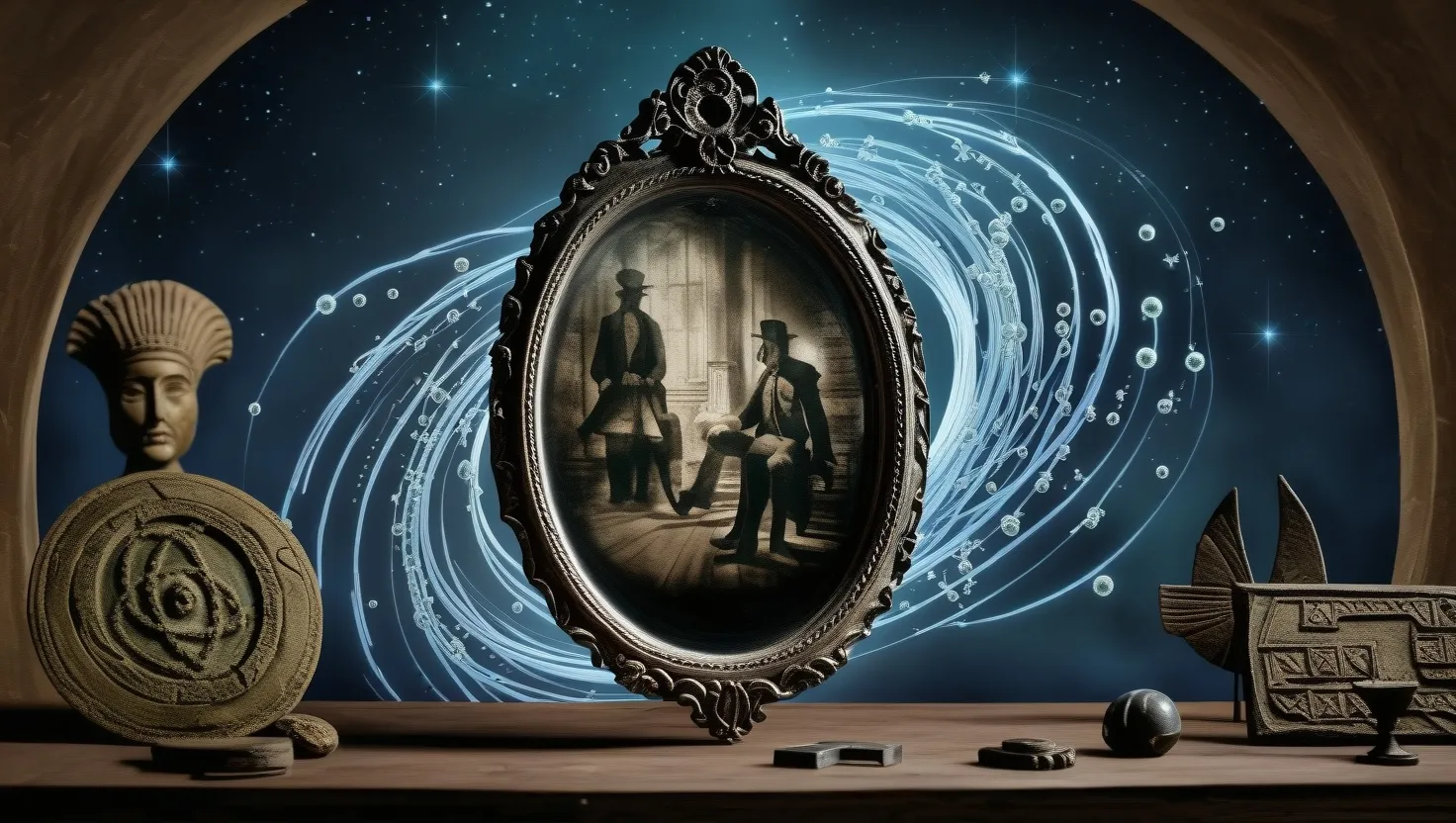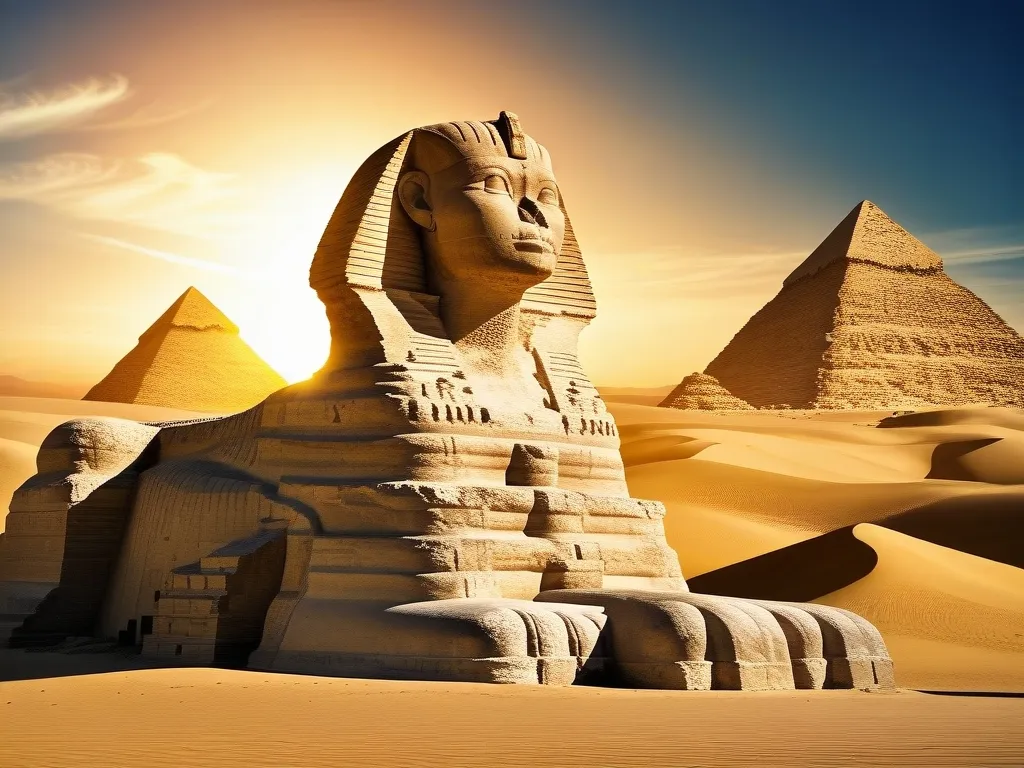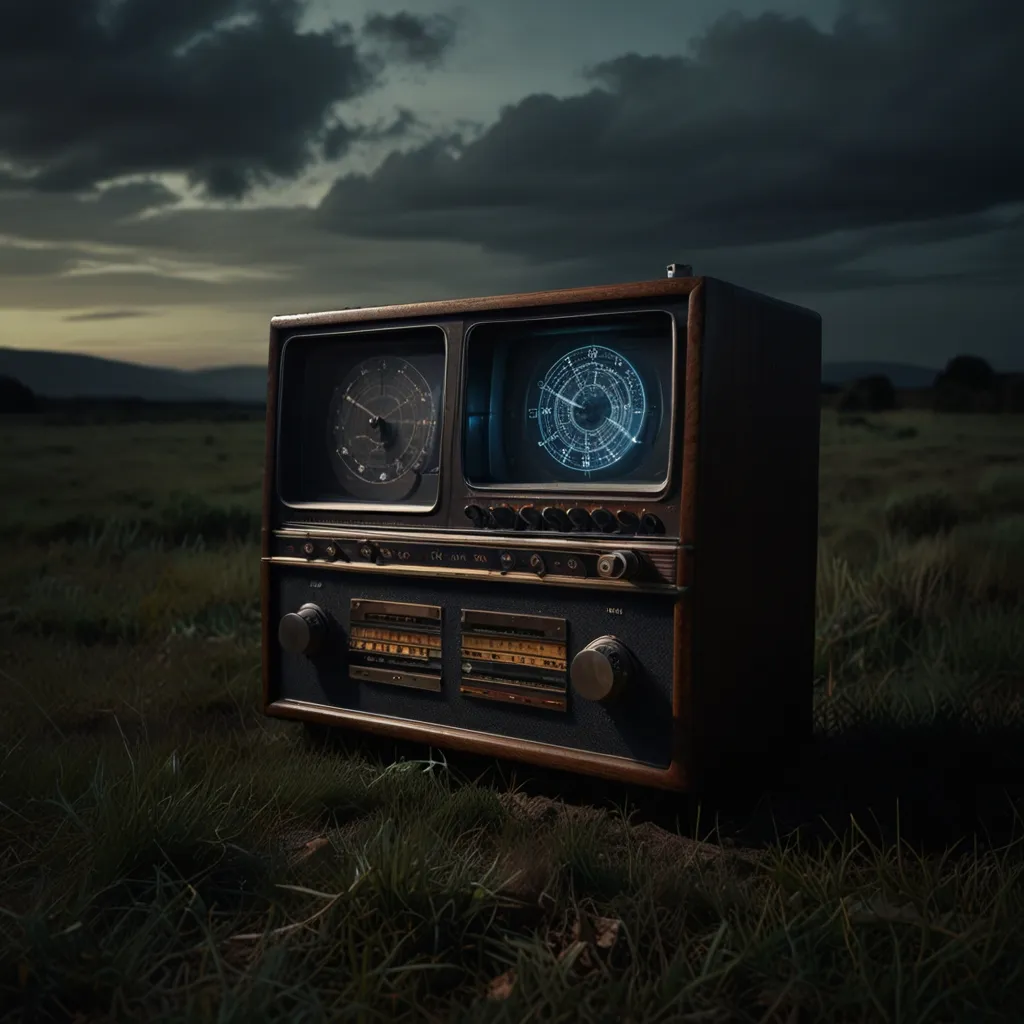When you stand in front of a mirror, you see a reflection of yourself, but what if that mirror could show you more than just your physical appearance? What if it could reveal glimpses of the past or even the future? This intriguing idea has sparked a fascinating debate at the intersection of archaeology, quantum physics, and temporal mysteries.
The concept of using mirrors as portals to the past is not entirely new, but it has gained significant attention with the introduction of quantum physics into the mix. Italian physicist Carlo Rovelli’s relational worldview, for instance, suggests that objects and their properties are defined by their relationships with other objects. This theory challenges the traditional view of space and time as independent entities and instead posits that they are intertwined with the objects within them.
Imagine a world where every object, including mirrors, is not just a passive reflector but an active participant in the web of relationships that define our reality. According to Rovelli’s theory, the properties of an object, such as its position, momentum, and energy, are not inherent but are derived from its interactions with other objects. This relational perspective can lead us to consider mirrors in a completely new light.
One of the most captivating theories in this realm is the idea of the Chronovisor, a device allegedly invented by Father Pellegrino Ernetti, a Benedictine monk with a background in physics and electronic engineering. Ernetti claimed that his Chronovisor could tune into specific frequencies emitted by past events, allowing users to see and hear historical scenes in real-time. This device, if it existed, would supposedly capture the residual electromagnetic radiation left behind by past events, much like a television picks up broadcast signals.
The story of the Chronovisor is as intriguing as it is controversial. Ernetti and his team, which included notable scientists like Enrico Fermi and Wernher von Braun, purportedly witnessed significant historical events, such as the crucifixion of Jesus Christ and the orations of Cicero. While these claims lack concrete evidence and are dismissed by mainstream science as pseudoscience, they fuel a persistent imagination about the possibilities of time viewing.
But what if ancient mirrors, with their often mysterious and intricate designs, held a secret similar to the Chronovisor? Some researchers suggest that certain antique mirrors could act as quantum chronovisors, allowing glimpses into past events. This idea is rooted in the concept that every action, including the crafting of these mirrors, leaves behind a unique energy signature that could be tapped into.
Consider the example of security cameras and telescopes, which allow us to see events that have occurred in the past. Security cameras capture moments that have already happened, while telescopes show us stars as they appeared millions of years ago. Mirrors, in a similar vein, could theoretically reflect not just our physical appearance but also the historical context in which they were created.
The Akasha Records, a concept popular in some spiritual and esoteric traditions, further elaborate on this idea. These records are believed to be a sort of cosmic database that contains all events of the past, present, and future. If we could tap into these records, we might gain access to historical knowledge that seems prophetic or inexplicable.
However, the scientific community remains skeptical about such claims. The principles described by Ernetti and others defy our current understanding of physics, particularly the laws of entropy and information loss. Despite this, the allure of time viewing technology persists, driven by our innate curiosity about the past and the future.
Quantum mechanics, with its probabilistic nature and multiple possible futures, adds another layer of complexity to this discussion. The idea that the future is not set in stone but is instead a multitude of possibilities raises questions about whether we can predict or even view future events. Future-viewing machines, as conceptualized in some theoretical frameworks, would display every possible future but could not determine which one would actually occur.
In the realm of archaeology, the discovery of ancient mirrors with unusual properties could provide tangible evidence for these theories. For instance, some ancient cultures believed that mirrors had mystical powers, allowing users to see beyond the present. While these beliefs might be dismissed as superstition, they could also be early attempts to understand the complex interplay between objects and their environments.
The debate surrounding the Chronovisor and quantum mirrors is not just about the feasibility of time viewing but also about our understanding of reality itself. If mirrors can indeed reflect more than just our physical appearance, it challenges our conventional view of space, time, and the nature of objects.
As we delve deeper into this mystery, we are forced to question everything we thought we knew about mirrors, time, and our ability to peer into the past. Are we overlooking time-bending artifacts hidden in plain sight, or is this just another case of reflection leading to misdirection? The answer lies at the intersection of science, mystery, and our unending quest to understand the world around us.
In conclusion, the idea that ancient mirrors could act as quantum chronovisors is a captivating blend of archaeology, quantum physics, and temporal mysteries. While it remains a topic of debate and speculation, it underscores our enduring fascination with the past and the future. As we continue to explore the boundaries of what is possible, we may uncover secrets that have been reflected in mirrors for centuries, waiting for us to discover them.






